Three years after Hurricane Katrina ravaged New Orleans, the city is still in ruins and 40,000 people are homeless. The government has abandoned reconstruction in favour of commercial development, but the residents of the Lower Ninth Ward, determined to stop their district becoming an industrial park, have engaged charities, architects and a Hollywood star to change the fate of their community. Dan Stewart went to take a look
ItŌĆÖs a ghost town. Wrecks of buildings, wrenched from their foundations lie on the side of the road. Lone sets of stairways lead up to porches that no longer exist. Overgrown fields lie where a sprawling neighbourhood once stood. Welcome to the Lower Ninth Ward, the area of New Orleans worst hit by Hurricane Katrina. Here a once bustling community has been smashed to smithereens.
Three years on, the place is still mostly in ruins, but a group of determined residents have stayed amid the wreckage. Now, with the help of charities, activists and at least one movie star, they are rebuilding their district. And they donŌĆÖt just want to just recreate it ŌĆō they want to make it the most eco-friendly district in the US, in the hope that building green will lure back former residents. But will it take more than just sustainable construction to save New Orleans?
Up until August 2005, the Lower Ninth Ward of New Orleans was a vibrant African-American community 10 minutes from the city centre. It was built on former plantation land and populated by families whose ancestors had pulled themselves out of slavery. Far from being a ghetto, the Lower Ninth Ward was home to canal-workers, fishermen and musicians. Gospel singer Mahalia Jackson lived there, as well as blues legend Fats Domino.
That August, the storm came. The canal that runs alongside the district burst its banks, unleashing a tidal wave that covered its surroundings in up to 20 feet of water. Hundreds died, and more than 1,000 homes were smashed and ripped up from their foundations in a matter of minutes.
The recovery period immediately after was badly handled. Crime and looting were rife. The $9bn (┬Ż4.5bn) of money approved by the Congress in March 2006 was spent mainly on temporary housing, infrastructure and emergency repairs. Of the mayor of New OrleansŌĆÖ $759m budget for 2007, just $15m went towards helping residents repair their flood-damaged homes. Many of KatrinaŌĆÖs survivors gave up waiting, and set up home in nearby Baton Rouge, or Houston, Texas. The population of the New Orleans shrank from 455,000 to 240,000 in March 2008.
Meanwhile, in the Lower Ninth Ward, grass started to grow over the deserted streets.
A community destroyed
I first read about the Lower Ninth on a blog written by Don Paul, a San Franciscan environmental activist who has been living in New Orleans since early 2006. PaulŌĆÖs blog, ŌĆ£Rebuild GreenŌĆØ, documents the cityŌĆÖs reconstruction efforts. He offered to take me on a tour of New Orleans.
The government doesnŌĆÖt want people to return. ThereŌĆÖs a campaign to keep them away.
Don Paul, environmental activist
On my first day in town, we meet at the French Quarter, the tourist hub of the city, which was physically unaffected by the floods. Almost $40m was spent last year on promoting New Orleans as a tourist destination, but the number of visitors remains 35% lower than in 2005. Paul tells me the hotels and casinos surrounding Bourbon Street were the first to be re-opened after the floods. ŌĆ£It makes sense of a sort,ŌĆØ he explains. ŌĆ£All those tax dollars coming in from tourists means more money for the city, I guess. Well, that was what we were told.ŌĆØ
Our next stop is the Lower Ninth Ward. As we drive out of the city centre, the number of boarded-up houses and dilapidated ruins multiplies. Within 10 minutes we cross the canal into the Lower Ninth. The ruins give way to empty plots where houses once stood. ŌĆ£Before the flooding, the Lower Ninth had the highest percentage of owner-occupied housing in the city ŌĆō mostly lower-class black Americans with their own income, who were homeowners over generations,ŌĆØ he says. ŌĆ£But they were wiped out by that wall of water.ŌĆØ
Paul has no doubt as to why the federal government has ignored the area: ŌĆ£ItŌĆÖs intentional. The government doesnŌĆÖt want those people to return; it wants to make New Orleans into a theme park. ThereŌĆÖs a campaign to keep people who were here away.ŌĆØ
To prove his point, Paul drives me to the Lafitte public housing complex, north of the city centre. Lafitte is one of four enormous developments that are to be demolished and rebuilt ŌĆō in the words of the Housing Authority of New Orleans ŌĆō as ŌĆ£mixed-income communities.ŌĆØ Fenced off and ready for demolition, the 79 brick buildings look, from the outside in fine condition. The flooding was not severe here and a study done by university MIT found Lafitte only suffered ŌĆ£minorŌĆØ damage as a result of Katrina.
Paul says a local contractor told him each block at Lafitte could be renovated for $20,000 ŌĆō or a total of $1.5m. The cost of demolishing and rebuilding them will be $200m. ŌĆ£ItŌĆÖs walking distance from the French Quarter, so itŌĆÖs prime real estate,ŌĆØ says Paul, with disgust. ŌĆ£These buildings are fine. They housed families and communities before Katrina, and they should be doing it now.ŌĆØ
More than 40,000 people in New Orleans are still homeless; most are living in tents and shanty towns on the city outskirts. Some are living in trailers provided by the Federal Emergency Management Agency (Fema), the body responsible for rehousing flood victims.
Paul drives me back to the Lower Ninth to meet Bob Legier, one of those still living in a trailer three years after the storm. Next to the trailer sits his half-completed, house, waiting for more funds so he can finish re-building it. Paul has been helping him do it sustainably, fitting it with a combined heat and power system and using dry wall insulation. Legier is waiting for a grant from the city. ŌĆ£Every time I call I get through to someone else,ŌĆØ he says. ŌĆ£But itŌĆÖs ok. Least I have a roof over my head, which is something.ŌĆØ
This may be true, but the Fema has recently announced that the materials its trailers are made from contain high amounts of the carcinogen formaldehyde. Two weeks before I met him, the Fema sent Bob a letter telling him staying in the trailer was dangerous and that he must leave by the summer. Will the house be ready by then, I ask? Legier shrugs. ŌĆ£Man, sometimes I just want to throw my hands up and say ŌĆśforget about itŌĆÖ,ŌĆØ he says wearily. ŌĆ£They keep saying they going to send me some money, but it never come.ŌĆØ
Sometimes I just want to say ŌĆśforget about itŌĆÖ. They keep saying they send money, but it never come.
Bob Legier, local resident
Legier is 70 years old. His trailer was never meant for living in. It has few windows and basic seating, and if he stays in it, it could make him seriously ill. ŌĆ£I donŌĆÖt feel IŌĆÖve been let down exactly, because IŌĆÖm not the only one,ŌĆØ he says, ŌĆ£but if I give up now, IŌĆÖve nowhere to go.ŌĆØ
Rebuilding lives
People like Legier inspired Pam Dashiell to do something about the Lower Ninth Ward. Dashiell is a former chair of the Holy Cross Neighbourhood Association, a community group based in the Lower Ninth.
The next day I meet Dashiell in the Holy Cross church, which houses the associationŌĆÖs office. She says she attended community meetings directly after the storm where commercial developers made their intentions for the Lower NinthŌĆÖs future very clear: ŌĆ£They wanted to make it a centre of industry, all factories and business parks,ŌĆØ she says. ŌĆ£The formal side of that was frightening enough, but the informal part, conversations you overheard in the corridors, were like a vision of capitalism run amok. You could almost picture their top hats, and see them rubbing their hands. The threat was real.ŌĆØ
And it was. In early 2006, mayor Ray NaginŌĆÖs Bring New Orleans Back (BNOB) plan gave residents four months to reclaim their ŌĆ£homesŌĆØ ŌĆō many no more than a pile of rubble ŌĆō or face being ŌĆ£bought outŌĆØ.
The mayor wanted the district to revert to swampland or become a park, but Joseph Canizaro, a well-known local developer and land-use committee chairman of the BNOB, suggested redevelopment.
Republican fund-raiser Canizaro became something of a hate figure in the Lower Ninth. At a residents meeting with BNOB in January 2006, Harvey Bender, a local man, confronted him. ŌĆ£I donŌĆÖt know you Mr Canizaro, but I hate you,ŌĆØ he is reputed to have said. ŌĆ£YouŌĆÖve been scheming to take our land.ŌĆØ
It was the strength of the local community and its determination to keep their land that prevented a glut of commercial development, says Dashiell. ŌĆ£This neighbourhoodŌĆÖs real plucky,ŌĆØ she says. ŌĆ£We have a ŌĆśyou arenŌĆÖt going to do this to meŌĆÖ attitude. None of us wanted to see the community given up in the face of all that was being done to make it disappear.ŌĆØ
With people selecting their own housing they engage with the design and thereŌĆÖs a sense of ownership.
David Adjaye, architect
Along with eight other community groups, Dashiell and the Holy Cross have attracted two key sustainable construction projects to the Lower Ninth Ward.
Global Green USA, an environmental charity, is building a showcase sustainable home in the Lower Ninth, as well as a school, a retail development and an apartment complex. Another charity, Make It Right, has gone one step further, planning a ŌĆ£green districtŌĆØ designed by an international team of architects including David Adjaye, Morphosis and Shigeru Ban.
As has been well-publicised, both Global Green and Make It Right have been given a PR boost by the film actor turned benefactor Brad Pitt. In fact, Pitt set up Make It Right himself, after charity work he did for Global Green made him aware of the problems of the Lower Ninth. The media attention guaranteed by PittŌĆÖs presence has no doubt made predatory developers think twice about a covert landgrab.
But Dashiell says neither project would have taken off if the community hadnŌĆÖt made it clear that it wanted this to be an environmentally-friendly development. ŌĆ£This is a real environmental place. People here have a respect for nature and the environment and values of thriftiness and energy efficiency,ŌĆØ she says. ŌĆ£ThereŌĆÖs a natural perception that green is good.ŌĆØ
Global GreenŌĆÖs development at the south of the Lower Ninth aims to be one of AmericaŌĆÖs most sustainable. Beth Galant, the project manager, takes me around the first house the charity has built in New Orleans. When I visit, it is nearing completion. Designed as a family home, it demonstrates the sustainable building techniques Global Green has pioneered in the US, from photovoltaics on its roof to a salvaged wood floor and geothermal heat pumps underneath.
GalantŌĆÖs team had to grapple with New OrleansŌĆÖ infamously tricky climate. Not only is it right in the centre of hurricane country, it generally sits about eight feet below sea level. Windows had to be wind-rated to 150mph in case of storms, and high humidity meant special mildew-resistant cypress had to be sourced for the walls. The team even had to use foam insulation made of soy bean, as ordinary insulation attracts termites.
Galant says the locals were fascinated by the process. They wanted to find out about energy-efficiency ratings and where to buy longlife bulbs. Unfortunately, the same couldnŌĆÖt be said of the local contractors who were brought in to help with construction. ŌĆ£The builders here werenŌĆÖt as easy to convince,ŌĆØ says Galant. ŌĆ£We had to spend time persuading them theyŌĆÖd make a lot of money doing things this way.ŌĆØ
Materials and technology had to be ordered in; apparently when Galant started, combi-boilers werenŌĆÖt available in the state of Louisiana. Thanks to Global Green, they are now, and local plumbers and builders have been trained in how they work. ŌĆ£The contractors had no knowledge of green building at all,ŌĆØ she says, ŌĆ£but now they know about it theyŌĆÖll be able to suggest energy-saving methods when they do other jobs. ItŌĆÖs about spreading knowledge.ŌĆØ
People here have a respect for nature, the environment, and values of thriftiness and energy efficiency.
Pam Dashiell, local resident
It appears to be working. Make It Right has taken the example set by Global Green and run with it. In the worst hit corner of the worst hit area of New Orleans, the charity is building 150 houses as the first phase of a larger ŌĆ£green districtŌĆØ. Thirteen architects have given their services for free, and the development aims to set an aspirational challenge to the rest of the city ŌĆō its mission: to prove good design, sustainability and community input can go hand in hand. If the first phase is successful, the charity pledges to continue building sustainable homes with the local community.
The risk with a project like this is that such a close-knit community might resent a bunch of out-of-towners ŌĆō not to mention a Hollywood star ŌĆō descending on their district. On the phone back in the UK, David Adjaye confirms it was a worry when he first visited New Orleans back in December 2006. ŌĆ£To begin with the locals were quite suspicious,ŌĆØ he says, ŌĆ£but the thing is if youŌĆÖre talking to someone whoŌĆÖs just lost everything in a flood, itŌĆÖs tough to talk about design. What they want is a roof over their head. It was challenging.ŌĆØ
However, after days of discussion with Pitt, his band of architects, and community leaders, the residents were persuaded that the Make It Right project could be a chance to deliver something better than had gone before. All the future residents will, with the help of disaster recovery funds and grants, be required to buy their houses so they have a stake in its construction. The homeowners will also choose their preferred design from the 13 drawn up.
ŌĆ£ItŌĆÖs so interesting to have people select their own housing,ŌĆØ says Adjaye. ŌĆ£They engage with the design, and thereŌĆÖs a real sense of ownership and social engagement. ThatŌĆÖs exactly what we donŌĆÖt have in the UK.ŌĆØ
All of this will be for nothing though, if people donŌĆÖt move back to the Lower Ninth. Only 5% of the people who lived there before the hurricane have returned to the stricken neighbourhood. Some, like Bob, are still living in their trailers, while others are staying with friends. In spite of the progress made with the green developments, Dashiell is not confident. ŌĆ£Realistically, I think we could see 25% of the people who were here before coming back. ItŌĆÖs been too long now, and people have lives elsewhere,ŌĆØ she says. ŌĆ£Still, IŌĆÖd welcome a base of newcomers. Children ŌĆō thatŌĆÖs what I want to see. We donŌĆÖt have many. We need families.ŌĆØ
For Dashiell and others, the Lower Ninth Ward will never again be the same vibrant community as before the storm. However, she says, thereŌĆÖs much to be proud of as community groups, architects and residents collaborate on their new developments.
ŌĆ£Things have gone differently here from almost anywhere else. There is activity, there is creativity, there is new thought. The amount that can be done with an organised, informed citizenry, you know ŌĆ”ŌĆØ She pauses. ŌĆ£ItŌĆÖs really something.ŌĆØ
What Brad Pitt did for New Orleans
 Brad Pitt is more than just a poster boy for the Make It Right project. As the charityŌĆÖs founder, the actor is taking a personal interest in the design and construction of the development. He even selected the architects himself, personally asking Morphosis, MVRDV and our own David Adjaye to take part.
Brad Pitt is more than just a poster boy for the Make It Right project. As the charityŌĆÖs founder, the actor is taking a personal interest in the design and construction of the development. He even selected the architects himself, personally asking Morphosis, MVRDV and our own David Adjaye to take part.
When we got the designs in, Brad was like a little kid in a candy shop. He wouldnŌĆÖt come in that often, but heŌĆÖd say letŌĆÖs do that here, and letŌĆÖs move this over here. It wouldnŌĆÖt have got the attention or the money it has got without him.
John Williams, executive architect, Make It Right
It was BradŌĆÖs idea to have 13 architects. The original plan was to ask 13 and cut it down to nine, you know so it was nine designs for the ninth ward ŌĆ” but Brad couldnŌĆÖt say no once heŌĆÖd seen the designs. It really is a passion of his.
Tom Darnden, project manager, Make It Right
HeŌĆÖs a category one star! He wanted people who were interesting for the project. He got in touch with us directly, which was quite exciting. Not the sort of thing you say no to. But itŌĆÖs well known heŌĆÖs interested in architecture and heŌĆÖs very committed to good design. It wasnŌĆÖt like working with a movie star at all.
David Adjaye, architect, Make It Right
All I can say is thank goodness for friends like Brad. There was no resentment when he came to the Lower Ninth. Any help was desperately needed. The kind of power that the media has, itŌĆÖs really the penultimate power these days, after God. And to use that for the benefit of people who need help, I think itŌĆÖs a wonderful thing.
Pam Dashiell, former chair, Holy Cross Neighbourhood Association





















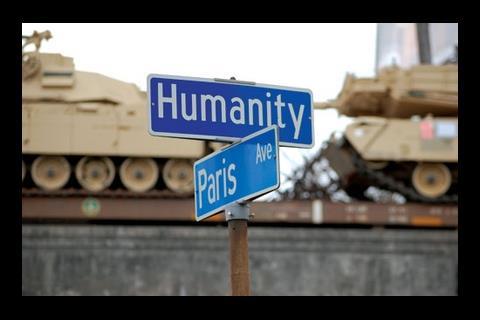
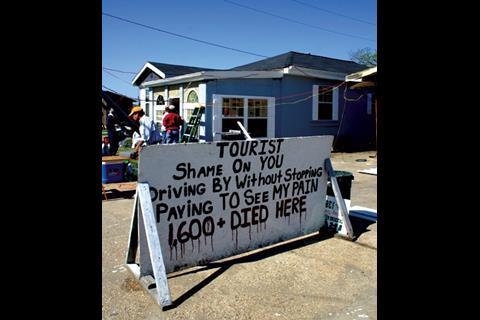
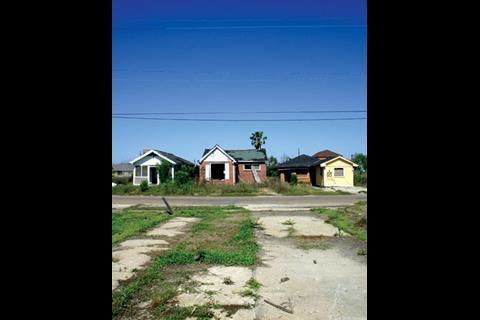

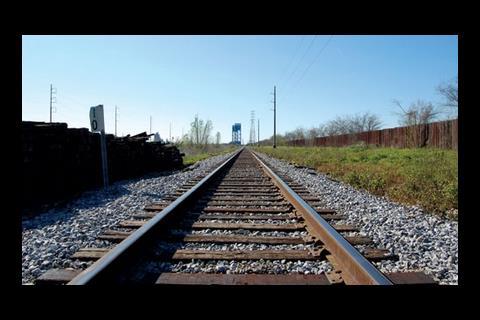
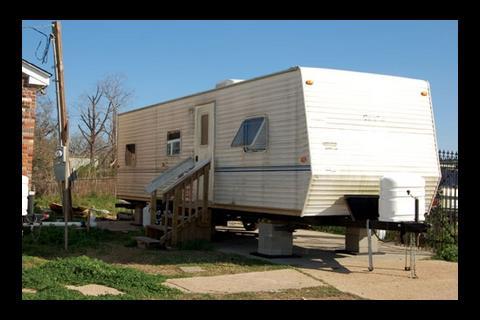


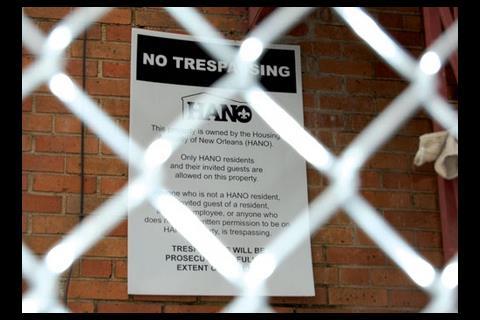


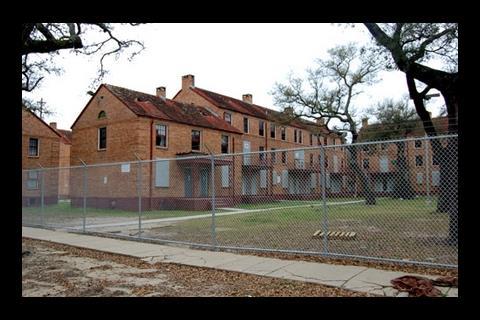
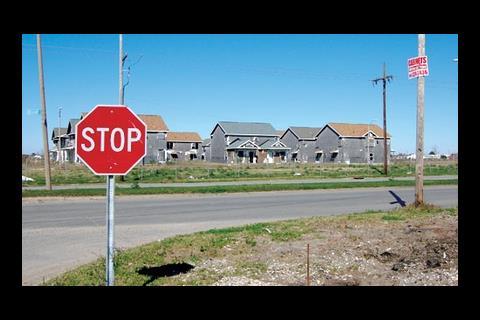

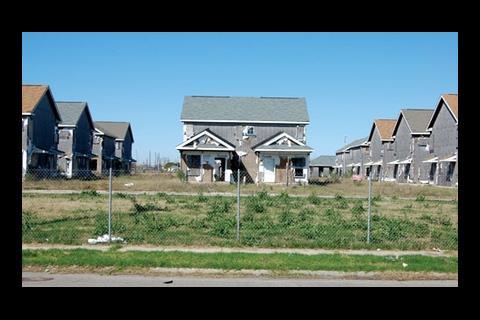


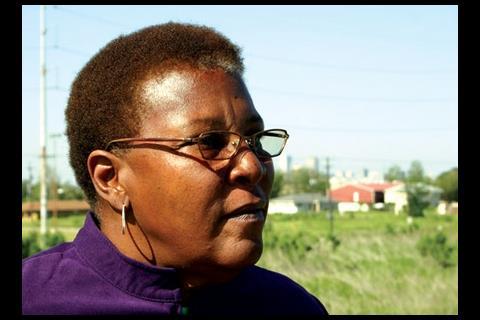






1 Readers' comment